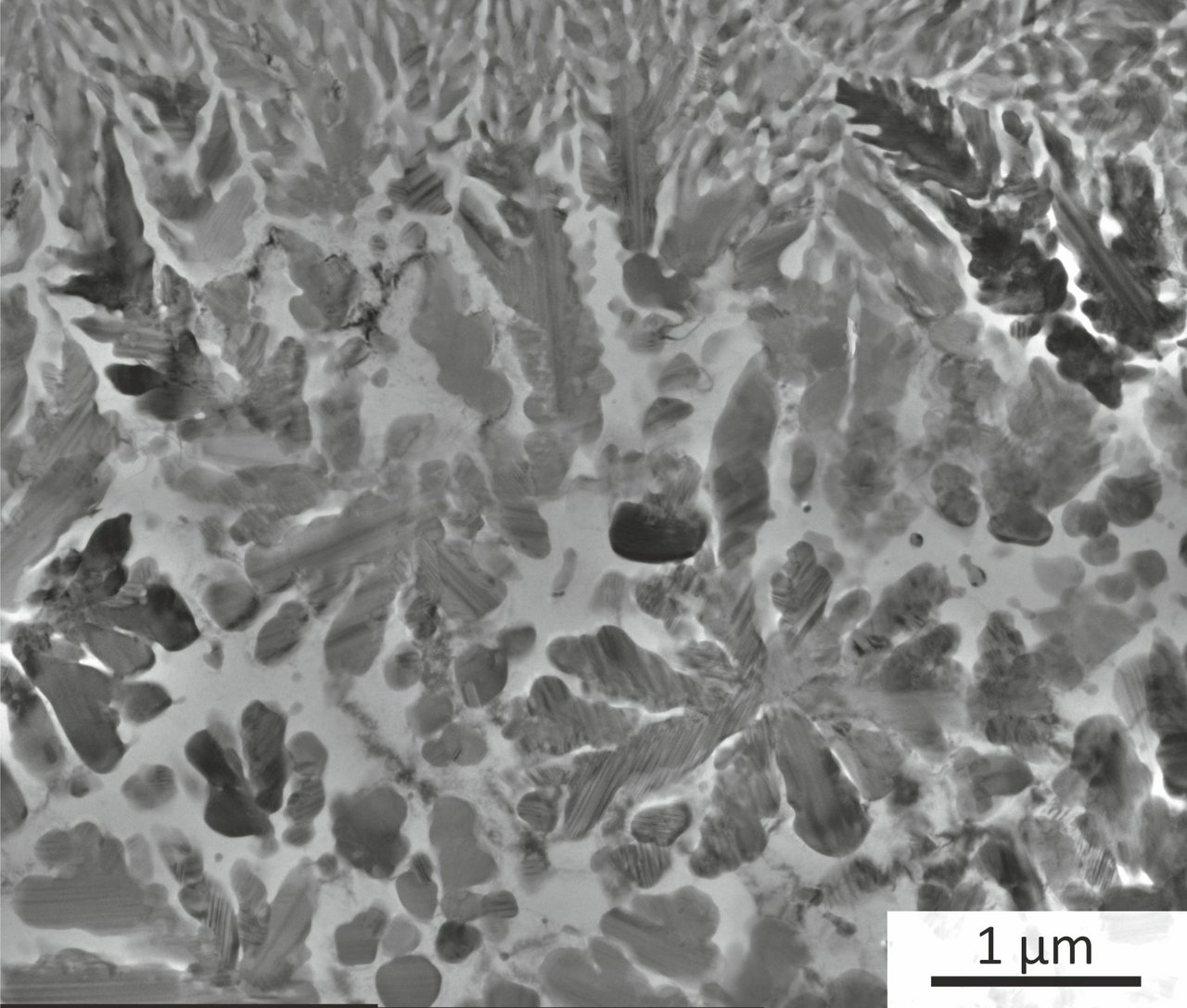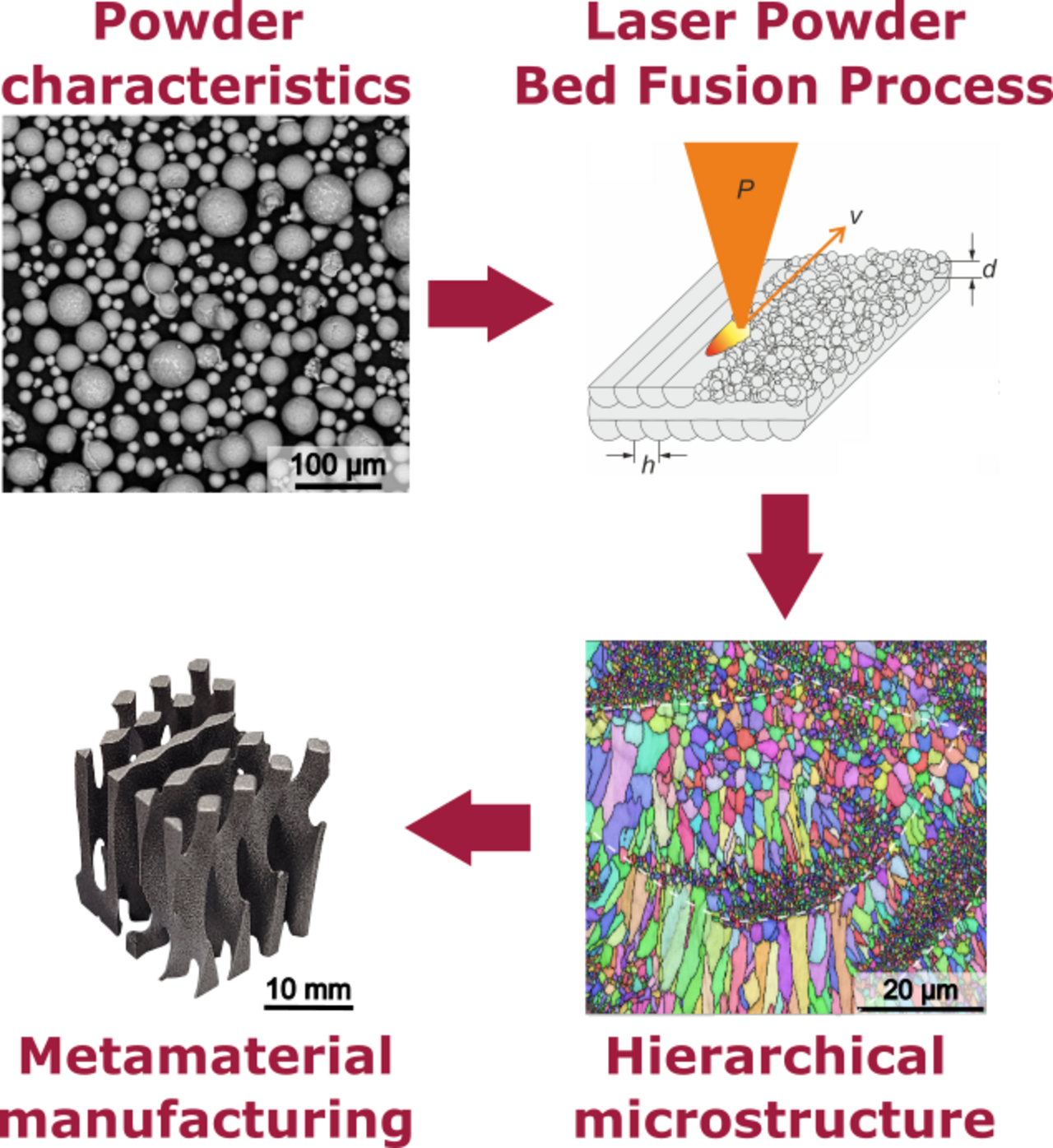
Contact: Prof. Dr. Julia Hufenbach, Dr. Uta Kühn, Philip Grimm, Katharina Nicole Gabrysiak
Aluminum alloys have become indispensable as lightweight construction material for industry, especially within the mobility sector. By applying additive manufacturing techniques, topology-optimized lightweight components can be realized in significantly reduced development times in comparison to conventional manufacturing routes. Our research activities do not only cover the fabrication of commercially available aluminum alloys by laser powder bed fusion (PBF-LB/M), e.g., AlSi12, AlSi10Mg and AA2024, but also the development of novel aluminum alloys tailored for additive manufacturing. Specifically, high-strength aluminum alloys, e.g., AA2024 or AA7075, are prone to hot cracking which is a challenge in the manufacturing via PBF‑LB/M. This requires the design of new aluminum alloys, such as Al-Mn-Ce- and Al-Mg-Zr-based systems, that combine the desired mechanical properties with improved processability.
One approach to overcoming this challenge is the development of a novel high-strength Al-Mn-Ce alloy for powder-based additive manufacturing. The starting point for the research work is an Al92Mn6Ce2 alloy that is composed of a metastable, high-strength Al20Mn2Ce phase in combination with a ductile Al matrix (Figure 1). This leads to promising behaviour under compressive stress and high wear resistance. In follow-up studies, novel Al-Mn-Ce-Zr alloys with improved ductility under tensile loading and enhanced processability by PBF-LB/M were developed.
We acknowledge the German Research Foundation (DFG) for funding this project (Project number: 437911652).
In addition, rare-earth free Al-Mg-Zr-based alloys for robust processing of resilient and damage-tolerant materials by PBF-LB/M are being developed. The alloy design is supported by data-driven and experimental methods to accelerate the materials discovery. This is accompanied by cross-scale characterization in order to analyze the influence of the microstructure on the mechanical properties. By this approach, new Al-Mg-Zr-Si alloys have been developed, which can be used to manufacture resilient structures such as artificially designed mechanical metamaterials (see Fig. 2).
This work is supported by the DFG within the framework of the GRK 2868 D³ “Data‑Driven Design of Resilient Metamaterials” (Project number: 493401063).
Publications:
K.G. Prashanth, S. Scudino, H.J. Klauss, K.B. Surreddi, L. Löber, Z. Wang, A.K. Chaubey, U. Kühn, J. Eckert, Microstructure and mechanical properties of AlSi12 produced by selective laser melting: Effect of heat treatment, Materials Science and Engineering: A, 590 (2014) 153-160
S. Pauly, P. Wang, U. Kühn, K. Kosiba, Experimental determination of cooling rates in selectively laser-melted eutectic Al-33Cu, Additive manufacturing, 22 (2018) 753-757
K. Gabrysiak, T. Gustmann, J. Freudenberger, K. Neufeld, L. Giebeler, C. Leyens, U. Kühn, Development and characterization of a metastable Al-Mn-Ce alloy produced by laser powder bed fusion, Additive Manufacturing Letters, 1 (2021) 100017.
U. Gebhardt, T. Gustmann, L. Giebeler, F. Hirsch, J. K. Hufenbach, M. Kästner, Additively manufactured AlSi10Mg lattices – Potential and limits of modelling as-designed structures, Materials & Design, 220 (2022) 110796
K. Kosiba, T. Gustmann, J. T. Kim, J. Seok, J. Jung, L. Beyer, S. Scudino, L. Giebeler, J. Han, J. K. Hufenbach, Experimental cooling rates during high-power laser powder bed fusion at varying processing conditions, Journal of Alloys and Compounds, 967 (2023) 171773

